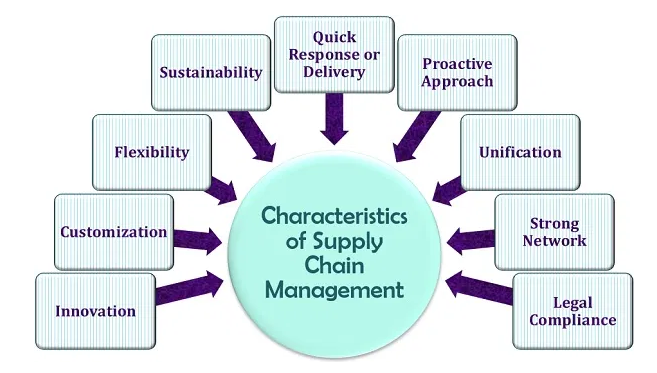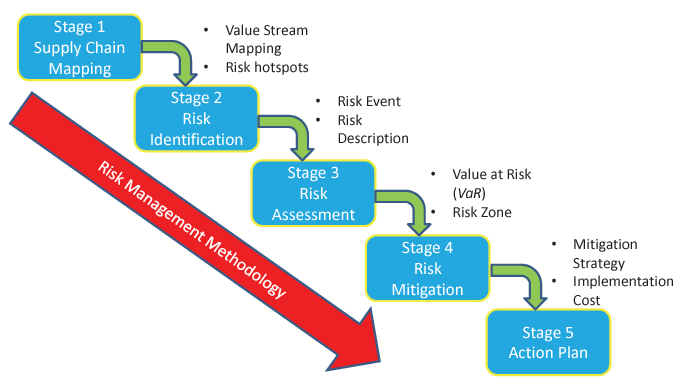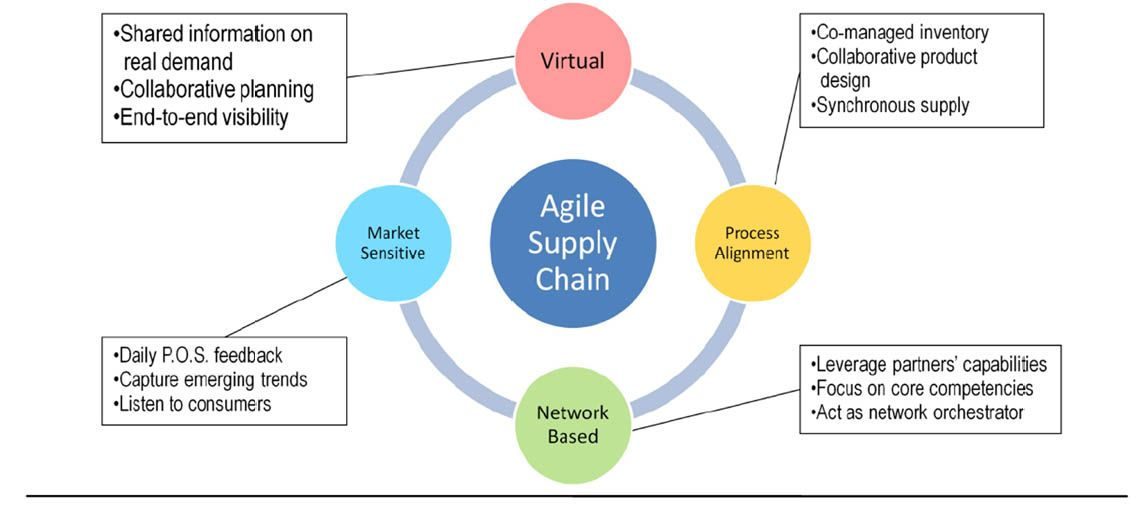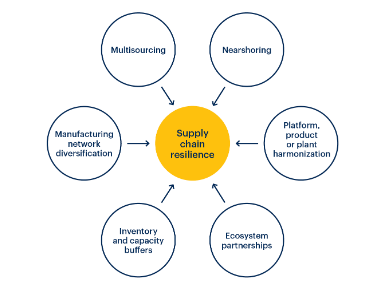MO0495/LD7068 Assignment Sample – Sustainable Supply Chain Management and Risk 2022
Component 2: Assignment
Executive Summary
Low price sourcing has to lead a principle of competitive strategy in the manufacturing and retail sectors of the pharmaceutical industry. Financial weak countries have hidden the insecurities of approaching or considering these supply chain management within the Enterprise Risk Management in the term of expanding market sources. The most preferable disruption of Supply Chain Management can disclose a company in the pharmaceutical industry and hampered the chances of profitability.
Natural disasters, poor communication between management and customers, and poor product quality can create a serious and negative impact on the pharmaceutical business. These disruptions are going to be very expensive and bring the worst distribution as well as production to screeching termination. Supply chain disruption has a negative effect on shareholder’s values of more than 9% and creates an atmosphere that is too critical to succeed in a rapidly introduced market.
Based on the study with important executives in the multimedia pharmaceutical industry it can be discovered various disruptions in Supply chain management. Companies have to improve their strategies to avoid those negative impacts on customers and their services by solving product complexity and globalization. They can craft the strategic performances with factor detection that then in the mitigation of negative effects by developing visibility which detects the disruptions rapidly.
Fair standard resourcing can enable the pharmaceutical industry to recover the operations in a short period. The pharmaceutical industry can approach long period collaborative work that increases their productivity as well as improves customer services. Collaborative work develops better communication between clients and suppliers that increases the percentage of sales and profits. They develop new technologies, which reduce their network problem, and access creative website designing to influence the customers to sustain their connection and further purchasing.
The real benefit of the management of the sustainable supply chain effectively extends beyond the going green business market. Besides that, this protective management can eventually help for improving the rate of productivity in the context of saving money. Due to using sustainable resources as well as several techniques, the business firm can additionally raise the building efficiency.
There are several benefits with respect to the management of supply chains. It can effectively help to minimize the rate of environmental impact. Besides that, it is alternatively concerned to improve the remarkable continuity of the effective supply. It can act as a potential strategy in case of new partnership as well as increase the enormous kind of economic profit. Besides that, supply chains help to create a connection with valuable consumers to be engaged with them.
Sustainable supply chain management is required for modern business as environmental-related problems can be mitigated through this. The research on supply chain risk management can reveal that manufacturing sectors are more impacted than others.
As a result, the transaction price was increased due to huge uncertainty, ownership of this supply chain procedure. Supply Chain Management attempts to build the virtual enlarged channels that can compose with individual owners and provide rapid delivery with fair quality. The pharmaceutical industry can highlight their expertise efforts and their profile to make a clear consent about their business to their clients and distributors.
Part A
Introduction
Supply chain management is considered as the amalgamation of vital business procedure in the pharmaceutical industry. Pharmaceutical industry leads an important role in the drug supplier chain with numerous risks. The management of pharmaceutical supply chain is involved in the requirements of participations such as sponsors, stakeholders as well as shown interest in life-saving activities.
Supply chain management can develop some innovative techniques in the manufacturer, production and delivery process. The pharmaceutical companies can determine their strengths and weaknesses through supply chain management and improve the logistic, marketing, design and financial operations. The certain natural and technological challenges can interrupt the quality and quantity of medicine delivery to accurate customers and place within estimated time.
Purpose
Purpose of this assignment is to understand the concept of Supply Chain management in the direction of sustainability of Pharmaceutical Industry. Supply chain management has the ability to improve the production process of medicines as well as performance of individual suppliers (Azlan & Nasir, 2018). Pharmaceutical industry can achieve their customers’ expectations and market demand through supply chain management.
Rationale
Supply chain management of pharmaceutical companies can face many challenges in the direction of sustainability. The main issue of pharmaceutical companies is regarding counterfeiting that can support black market widely and destroy the profit ration of pharmaceutical companies (Busse, Meinlschmidt & Foerstl, 2017). Companies can lose their foreign investors due to this counterfeiting and face improper transaction feedback.
Lack of coordination can hamper the communication process of pharmaceutical industry between company and customers. The inventory management cannot gather the entire information regarding customers’ demands so that products can be delivered in wrong place. The health care experts and medical practitioners stated that pharmaceutical industry has a vital problem with adherence risk of prescriptions (Behzadi et al. 2018).
Characterization of Supply Chain Management in Pharmaceutical Industry
Supply Chain Management (SPM) is described as the combination of key business procedures for the logic of regulating value for stakeholders and customers. The characteristics of a fair Supply Chain Management are optimization, innovation, networking, flexibility, green sustainable strategy, and punctual delivery process.

Figure 1: Characteristics of Supply Chain Management
(Source: Busse, Meinlschmidt & Foerstl, 2017)
Flexibility is an important characteristic of Supply Chain Management in the pharmaceutical industry to react to certain circumstances and changes in the processing environment. Any kind of certain disasters such as a medical epidemic, economic instability, and natural issues, the flexible supply chain can access its program and drive the system in the competitive market (Busse, Meinlschmidt & Foerstl, 2017).
Optimization is the idea with inventory management to achieve the supply-demand of customers by incorporating tools, present customers’ behavior for the product. Management utilizes sensitive materials to make eco-friendly packaging with the help of the Green Sustainable Supply Chain that does not have any negative impact on the environment.
The speedy delivery supply chain is necessary to respond to the customers’ demand within the time that influences the customers for further purchase and positive reviews. Supply Chain embraces innovation by implementing the latest technologies in Supply Chain Management that ensure the standard in the competitive market and offers good services.
Networking is another characteristic of the Supply Chain in online marketing that provides proper communication between suppliers, customers, and management and develops an interesting website. Communication ensures the order and delivery details of the product and website design create an interest in customers for further orders (Behzadi et al. 2018).
Strategic Risk Management Approaches in the Pharmaceutical Industry
Supply Chain Management has applied the “PPRR Risk Model” that helps the pharmaceutical industry to take a precautionary plan for supply chain risk. This model prepared a sustainable plan in an emergency situation and responded to the executive plan to minimize the effect of disruption.
The pharmaceutical industry can recover the operation in the normal process in possible timing by this above-mentioned model (Fan & Stevenson, 2018). Strategic risk management tends to manage environmental risk in their supply chain as coronavirus pandemic explores the space in the retail worldwide supply chain.
The pharmaceutical industry considered a plan of stockpiling products during the pandemic to find the distributors and suppliers to the end moment of the supply chain. In order to improve the cyber supply chain, Strategic Risk Management established a compliance level for suppliers, manufacturers, and distributors (Fan & Stevenson, 2018).
The pharmaceutical industry is able to describe the roles and hire security controllers for accessing the system regarding cybersecurity policy that helps them in software solutions and network control.

Figure 2: Risk management approach in supply chain
(Source: Alzoubi et al. 2020)
In order to reduce the excessive business vulnerability strategic risk management increase visibility into the financial stability of suppliers that help the pharmaceutical industry to report the financial stability and deal with vendors. Strategic risk management implements a logical contingency plan to ensure business sustainability in disruption of the supply chain.
The pharmaceutical industry maps out the supply chain to measure the vulnerable, geographic risk with help of this strategy (Alzoubi et al. 2020).
Agile Supply Chain Management in the Pharmaceutical Industry
The pharmaceutical industry has approached Agile Supply Chain Management, which is the process of product distribution. This system allows the industry for quick delivery by saving transport costs as well as maintaining the flexibility, quality of products. Agile supply chain focused on balancing the latest trend with short period forecasting activity that provides customized elements in the pharmaceutical industry.
Suppliers and distributors get advantages with these market-based short-term, customized products in the competitive business market. Agility maintains receptiveness and flexibility as well as tackles the certain demand through postpone strategy. The pharmaceutical industry is capable of responding rapidly to unpredictable changes in customers demand and their preferences as well as finalizing efficiency.
This supply chain mechanism also drives the customers with lower cost and favorable assortment that help the pharmaceutical industry to influence their potential customers to sustain their relationship (Padhi, Pati & Rajeev, 2018).

Figure 3: Agile Supply chain management
(Source: Padhi, Pati & Rajeev, 2018)
Agile Supply Chain Management builds a strong partnership between distributors and vendors to increase their work initiative that is crucial to improve in the competitive market. This strategy offers an opportunity for collaborative work that increases productivity and efficiency in supply chain management.
The pharmaceutical industry can deliver the demanding product within the time and hold a significant inventory to satisfy their customers’ expectations (Kumar et al. 2019). In this study, it can be concluded that implementation of Agile Supply Chain Management pharmaceutical industry can manufacture the potential drugs toward customized therapies and stakeholders of supply chain response immediately.
Governance in the role of Legislature Compliance and Measuring Tools
Good legislative products with identified characteristics can contribute to a presence in government social, political, and economic measuring tools. Governance initiates the majority of legislature compliances for creating law and implementing the functions of governments (Fan & Stevenson, 2018). Each function is responsible for deriving the procedure of law-making programs that compromise the lifestyle of the legislature.
At the first step, governance identified certain problems and required policy then determined the legislature compliance solution to design the provisions of legislative.
Strategic Setting of Supply Chain
The strategic setting of the pharmaceutical supply chain is necessary as it can help to mitigate external risks with high value. End-to-end supply chain processes can be developed with the help of such a strategy and cognitive development in the delivery process can be acquired (Baryannis et al. 2019).
In order to take sustainability initiatives, green logistic management is highly followed in the case of pharmaceutical supply chain processes.

Figure 4: Strategic Setting of Supply Chain
(Source: Baryannis et al. 2019)
Customer-centric models are followed broadly for the medicine delivery process that in turn can help to control tradeoffs. Smart customization of all products is a prime initiative taken by global supply chain firms to communicate with stakeholders better. Supply chain initiatives taken by pharmaceutical industries are majorly focused on ISO 31000 for delivering safety and security for all (Baryannis et al. 2019).
Inventory and manufacturing processes of all drugs are controlled better through supply chain management to deliver better reliability for process recognition. Moreover, all of these initiatives can help to deliver feasibility in the business process and authentication for planning can be managed.
Part B
Overview of Sustainable Supply Chain Management of Pharmaceutical Industry
Sustainable Supply Chain Management or SSCM works to make both the global and domestic supply chain stable. SSCM can recognize, evaluate practices and outing technologies that are needed to make a business supply chain more profitable and stable. It involves financial and environmental approaches to make the supply chain complete along with enhanced productivity and better employee engagement (Azlan et al. 2018).
Supply chain sustainability considers facts like environmental duties, preservation of resources for future use, reduction of carbon emission, economic savings and decrease in excess costs, communal responsibilities. A pharmaceutical industry with sustainable supply chain management can have better profit, and an improved company-consumer relationship which helps in increasing sales, and reduced waste (Bijaksana et al. 2018).
Opportunities to Innovate Supply Chain Management of Pharmaceutical Company
There are some innovations that support Sustainable Supply Chain Management.
“Radical transparency”: Radical transparency or supply chain transparency is expanded as a critical solution of Supply Chain management. This provides data to its buyers or consumers about some high-risk goods. Consumers can get aware of issues regarding that specific product before buying that (Idris et al. 2019).
“Redesigning”: Redesigning of products as per the need and choice of customers makes the supply chain more sustainable. Customizing the same existing product reduces the excess cost of raw materials, cuts down extra expenses, and helps the company to gain a great profit and a higher market share.
“Concentrating on sustainability”: Along with the production of desired products, a company must also arrange some additional innovations to remain in the market competition and become more stable (Kumar et al. 2020).
“Fuel of the future”: Transportation or delivery of the product is the main part of the supply chain, and it consumes a great amount of the profit of the company. Some of the companies are nowadays focusing on using hydrogen as an alternative sustainable fuel. Hydrogen can replace oxygen as fuel as hydrogen is low in cost and releases water after use (Peng et al. 2021).
“Smart plastics”: The packaging of a product costs a large amount of money, so the companies are thinking to switch to an alternative of petroleum-based packaging. Innovators are researching nanotechnology to make the packaging effective as as possible.
Product Development to Sustain Pharmaceutical Industry
Companies can get competitive advantages as soon as they include a supply chain management team in the process of new product development. The supply chain plays the central role in the market; product launching and can take part in the making of a successful call.
The supply chain involves a lot of steps, from collecting raw materials to the delivery of a product to its buyer (Sembiring et al. 2020). Only a great concept or business plan cannot alone run a business towards a significant profit. Launching a new product or innovation that can cause market success and enhanced profitability include several important factors along with the participation of the supply chain management team.
Structure of supply chain for Making Pharmaceutical Industry Sustainable
Market share, market reputation, and profitability of any company or industry depend on its supply chain management, so it is very important to organize the supply chain properly. Supply chain management has also advanced due to high market demand and on-time delivery of products (Wang et al. 2018).
Companies and industries nowadays have better access to the stores and can have adequate amounts of data for making a better supply chain.
The basic structure of supply chain: Companies or industries that buy and sell products from each other generally form the basic structure of the supply chain. As a result of doing so, the main leading company creates a sequence of relationships with other companies. This includes the suppliers of raw components and the consumer of the product also (Idris et al. 2019).
Supply chain member collaboration: In order to increase the engagement and efficiency of employees, the managers and head of the company focus on improving supply chain collaboration. It never changes the transaction of money and production, but it creates a more formal business connection. Companies can plan a better and different activity process after they get the data about product data and production state (Kumar et al. 2020).
Supply chain partnership: As a result of increased collaboration between all employees and managing authority, a long-term partnership group is formed to make the supply chain arrangements more stable. This group actively takes part in the cost reduction activity and ensures the continuous supply for a leading company.
Future optimization of Pharmaceutical Industry in its Sustainability
Customer awareness is increasing day by day, and along with that, companies are being the only responsible authority for their impact in the global market. Life Cycle Analysis or LCA is an internationally known technique that can count the economic activity caused by some environmental impacts (Peng et al. 2021). LCA promotes business decisions, processing, waste management, and designs for a new business policy.
The life of a product starts with its raw materials through the processing of those materials. The products enter the use phase after their manufacturing and proper distribution (Sembiring et al. 2020). During this use phase, a product can be repaired and sustained, and after this use phase, the product enters the end part of its life, which is usually disposal or reuse.
Legislation of proofreading to Sustain the Pharmaceutical Industry
Laws and legislation are important, and for this reason, there are some government rules and regulations that have an effect on supply chain management, such as:
“Restriction of hazardous substance”: In this rule, companies should reduce or diminish the use of harmful or hazardous materials that can harm individuals as well as the environment (Sembiring et al. 2020).
“Registration, evaluation, authorization and restriction of chemicals”: Substances which are of very serious concern cannot be used and such chemicals are already listed by the EU (Wang et al. 2018).
“Waste from electrical and electronic equipment”: Companies have to recycle electronic equipment, and the same manufacturing authority must collect those items themselves.
“Conflict minerals as defined under the Dodd-Frank Act”: According to “Dodd-Frank Act”, a public company has to be able to prove that their used minerals are not accessed from the places that have “Financing conflict”.
Conclusion
It can be concluded from the entire study that supply chain management help the pharmaceutical companies to sustain their business growth and survival in the international pharmaceutical industry. Economical weak pharmaceutical companies have hidden their initiatives or interest of implementing supply chain management for its processing cost and certain risk.
The pharmaceutical companies can improve their manufacturing, logistic, supplying and product designing operations through supply chain management. Besides that, supply chain management can identify the risk regarding natural and financial crisis within the workplace and resolve them. Supply chain management implements good communication practices between pharmaceutical companies and customers that ensures the customer information to satisfactory delivery process.
Pharmaceutical industry can help the entire health or medical system to satisfy their consumers and patients that influence the UK governance to support and invest in the pharmaceutical industry. Affordability and quality o0f necessary products help the pharmaceutical companies to achieve their created goals and customers’ expectations.
References
Component 2: Part A
Alzoubi, H., Ahmed, G., Al-Gasaymeh, A., & Kurdi, B. (2020). Empirical study on sustainable supply chain strategies and its impact on competitive priorities: The mediating role of supply chain collaboration. Management Science Letters, 10(3), 703-708. Retrieved from: http://m.growingscience.com/msl/Vol10/msl_2019_260.pdf
Baryannis, G., Validi, S., Dani, S., & Antoniou, G. (2019). Supply chain risk management and artificial intelligence: state of the art and future research directions. International Journal of Production Research, 57(7), 2179-2202. Retrieved from: https://www.tandfonline.com/doi/pdf/10.1080/00207543.2018.1530476
Behzadi, G., O’Sullivan, M. J., Olsen, T. L., & Zhang, A. (2018). Agribusiness supply chain risk management: A review of quantitative decision models. Omega, 79, 21-42. Retrieved from: http://repository.essex.ac.uk/27965/7/E8429-IranArze.pdf
Busse, C., Meinlschmidt, J., & Foerstl, K. (2017). Managing information processing needs in global supply chains: A prerequisite to sustainable supply chain management. Journal of Supply Chain Management, 53(1), 87-113. Retrieved from: https://fardapaper.ir/mohavaha/uploads/2018/09/Fardapaper-Managing-Information-Processing-Needs-in-Global-Supply-Chains-A-Prerequisite-to-Sustainable-Supply-Chain-Management.pdf
de Oliveira, U. R., Marins, F. A. S., Rocha, H. M., & Salomon, V. A. P. (2017). The ISO 31000 standard in supply chain risk management. Journal of Cleaner Production, 151, 616-633. Retrieved from: https://repositorio.unesp.br/bitstream/handle/11449/178754/2-s2.0-85016512391.pdf?sequence=1
Fan, Y., & Stevenson, M. (2018). A review of supply chain risk management: definition, theory, and research agenda. International Journal of Physical Distribution & Logistics Management. Retrieved from: https://e-space.mmu.ac.uk/621434/1/_system_appendPDF_proof_hi-2.pdf
Kumar, A., Zavadskas, E. K., Mangla, S. K., Agrawal, V., Sharma, K., & Gupta, D. (2019). When risks need attention: adoption of green supply chain initiatives in the pharmaceutical industry. International Journal of Production Research, 57(11), 3554-3576. Retrieved from: https://pearl.plymouth.ac.uk/bitstream/handle/10026.1/12850/IJPR%20Revised%20Manuscript.pdf?sequence=1&isAllowed=y
Padhi, S. S., Pati, R. K., & Rajeev, A. (2018). Framework for selecting sustainable supply chain processes and industries using an integrated approach. Journal of cleaner production, 184, 969-984. Retrieved from: http://dspace.iimk.ac.in/xmlui/bitstream/handle/2259/980/Article%20%281%29%29.pdf?sequence=1&isAllowed=y
Component 2: Part B
Azlan, M. A., & Nasir, M. F. M. (2018). A Review of New Product Development (NDP) in Sustainable Supply Chain Management (SSCM). INTERNATIONAL JOURNAL OF ACADEMIC RESEARCH IN BUSINESS AND SOCIAL SCIENCES, 8(11). Retrieved from: https://www.researchgate.net/profile/Azwandi_Azlan/publication/333185254_A_Review_of_New_Product_Development_NDP_in_Sustainable_Supply_Chain_Management_SSCM/links/5cdf75c292851c4eabaa5374/A-Review-of-New-Product-Development-NDP-in-Sustainable-Supply-Chain-Management-SSCM.pdf
Bijaksana, G., Daryanto, A., Kusumastanto, T., & Zulbainarni, N. (2018). SSCM Performance Improvement Strategy of Container Shipping Industry in Indonesia. Indonesian Journal of Business and Entrepreneurship (IJBE), 4(2), 179-179. Retrieved from: https://journal.ipb.ac.id/index.php/ijbe/article/download/21340/15156
Idris, W. M. R. W., Rafi, A., Bidin, A., & Jamal, A. A. (2019). Developing new robust motion templates of martial art techniques using R-GDL approach: a case study of SSCM. International Journal of Arts and Technology, 11(1), 36-79. Retrieved from: https://www.inderscienceonline.com/doi/pdf/10.1504/IJART.2019.097337
Kumar, A., Moktadir, M. A., Khan, S. A. R., Garza-Reyes, J. A., Tyagi, M., & Kazançoğlu, Y. (2020). Behavioral factors on the adoption of sustainable supply chain practices. Resources, Conservation and Recycling, 158, 104818. Retrieved from: https://derby.openrepository.com/bitstream/handle/10545/624459/updated_RECYCL-D-19-01141R3.pdf?sequence=1
Peng, X., Kurnia, S., & Cui, T. (2021). IT-Enabled Sustainable Supply Chain Management Capability Maturity. In Proceedings of the 54th Hawaii International Conference on System Sciences (p. 4795). Retrieved from: https://scholarspace.manoa.hawaii.edu/bitstream/10125/71198/1/0471.pdf
Sembiring, N., Yurisditira, R., & Devany, J. (2020, May). Analysis of Drivers and Barriers The Implementation of Sustainability Supply Chain Management (SSCM) in PT. ABC. In IOP Conference Series: Materials Science and Engineering (Vol. 851, No. 1, p. 012047). IOP Publishing. Retrieved from: https://iopscience.iop.org/article/10.1088/1757-899X/851/1/012047/pdf
Wang, J., Zhang, Y., & Goh, M. (2018). Moderating the role of firm size in sustainable performance improvement through sustainable supply chain management. Sustainability, 10(5), 1654. Retrieved from: https://www.mdpi.com/2071-1050/10/5/1654/pdf
Know more about UniqueSubmission’s other writing services:


For the reason that the admin of this site is working no uncertainty very quickly it will be renowned due to its quality contents.
I don’t think the title of your article matches the content lol. Just kidding, mainly because I had some doubts after reading the article.